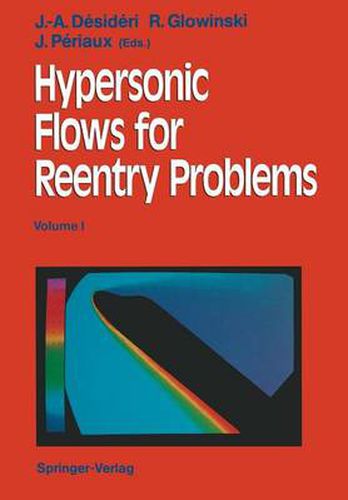Readings Newsletter
Become a Readings Member to make your shopping experience even easier.
Sign in or sign up for free!
You’re not far away from qualifying for FREE standard shipping within Australia
You’ve qualified for FREE standard shipping within Australia
The cart is loading…






This title is printed to order. This book may have been self-published. If so, we cannot guarantee the quality of the content. In the main most books will have gone through the editing process however some may not. We therefore suggest that you be aware of this before ordering this book. If in doubt check either the author or publisher’s details as we are unable to accept any returns unless they are faulty. Please contact us if you have any questions.
One of the most challenging problems of modern engineering is undoubtedly the prediction of hypersonic flows around space vehicles in reentry conditions. Indeed, the difficulties are numerous: first of all, these flows are very difficult to model, since very complex physical and chemical phenomena take place during the reentry phase; secondly, temperature, velocity and enthalpy are very high and densities are very low, making the reentry process very difficult to reproduce in ground-based experiments. The past three decades have seen important efforts in computational fluid dynam ics relying on the use of supercomputers to simulate these very complicated flows. The numerical simulation based on imperfect models and methods which were es sentially designed for transonic and supersonic flows has still a long way to go in order to be able to predict these hypersonic reentry flows very accurately. This situation has motivated very strong international cooperative efforts with, as the most visible consequences, the EuropelUnited States Short Courses on Hy personics, which were held in Paris, in 1987 [1,2], Colorado Springs in 1989 [3], and Aachen in 1990 [3]. The workshop on Hypersonics whose results are presented and analysed in these volumes is also a direct consequence of this international cooperation. This scien tific event was an initiative of P. Perrier, Head of the Theoretical Aerodynamics Department of DASSAULT AVIATION, who played a key role in the identification of the critical problems and the realisation of experiments, within the Hermes R&D program framework.
$9.00 standard shipping within Australia
FREE standard shipping within Australia for orders over $100.00
Express & International shipping calculated at checkout
This title is printed to order. This book may have been self-published. If so, we cannot guarantee the quality of the content. In the main most books will have gone through the editing process however some may not. We therefore suggest that you be aware of this before ordering this book. If in doubt check either the author or publisher’s details as we are unable to accept any returns unless they are faulty. Please contact us if you have any questions.
One of the most challenging problems of modern engineering is undoubtedly the prediction of hypersonic flows around space vehicles in reentry conditions. Indeed, the difficulties are numerous: first of all, these flows are very difficult to model, since very complex physical and chemical phenomena take place during the reentry phase; secondly, temperature, velocity and enthalpy are very high and densities are very low, making the reentry process very difficult to reproduce in ground-based experiments. The past three decades have seen important efforts in computational fluid dynam ics relying on the use of supercomputers to simulate these very complicated flows. The numerical simulation based on imperfect models and methods which were es sentially designed for transonic and supersonic flows has still a long way to go in order to be able to predict these hypersonic reentry flows very accurately. This situation has motivated very strong international cooperative efforts with, as the most visible consequences, the EuropelUnited States Short Courses on Hy personics, which were held in Paris, in 1987 [1,2], Colorado Springs in 1989 [3], and Aachen in 1990 [3]. The workshop on Hypersonics whose results are presented and analysed in these volumes is also a direct consequence of this international cooperation. This scien tific event was an initiative of P. Perrier, Head of the Theoretical Aerodynamics Department of DASSAULT AVIATION, who played a key role in the identification of the critical problems and the realisation of experiments, within the Hermes R&D program framework.